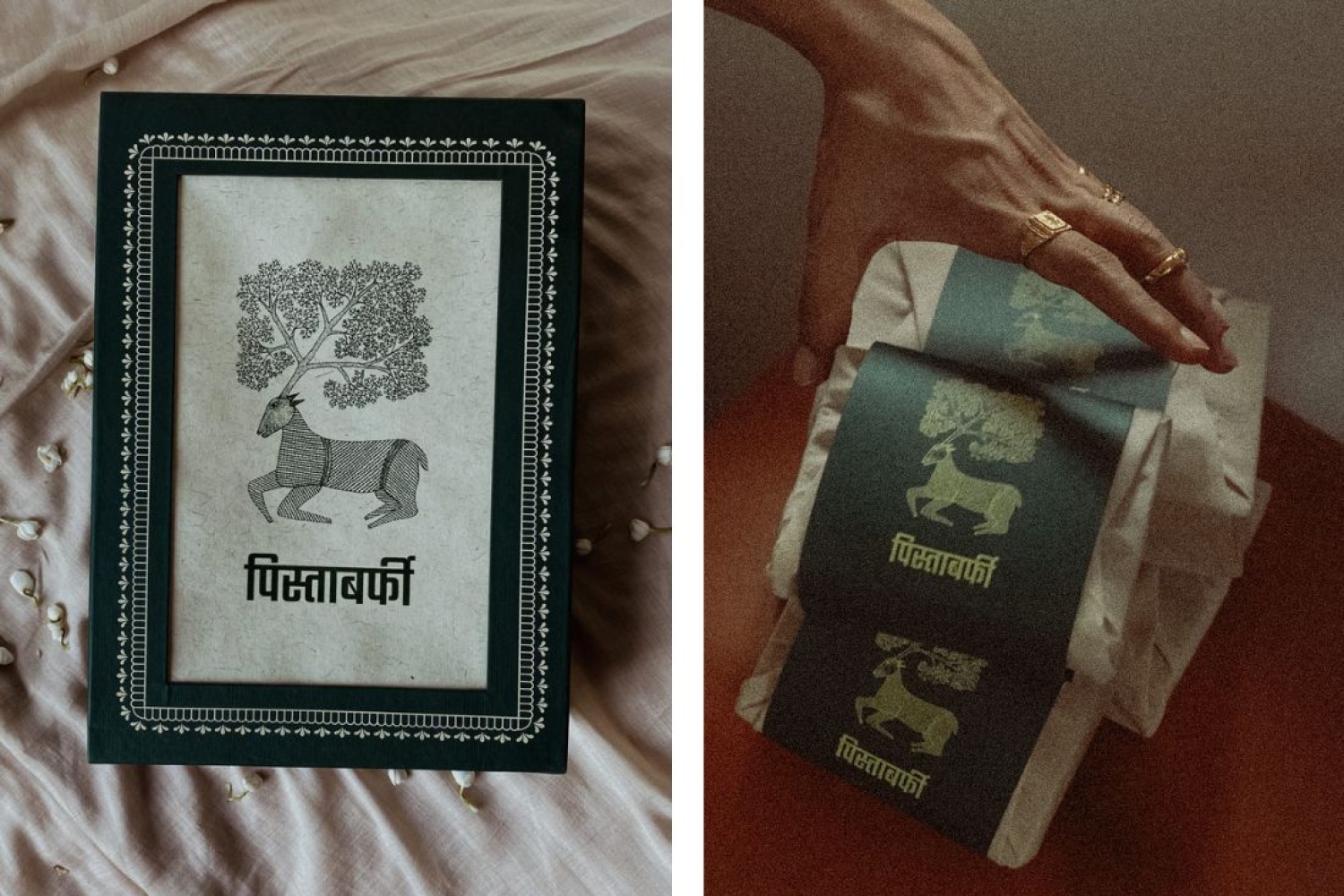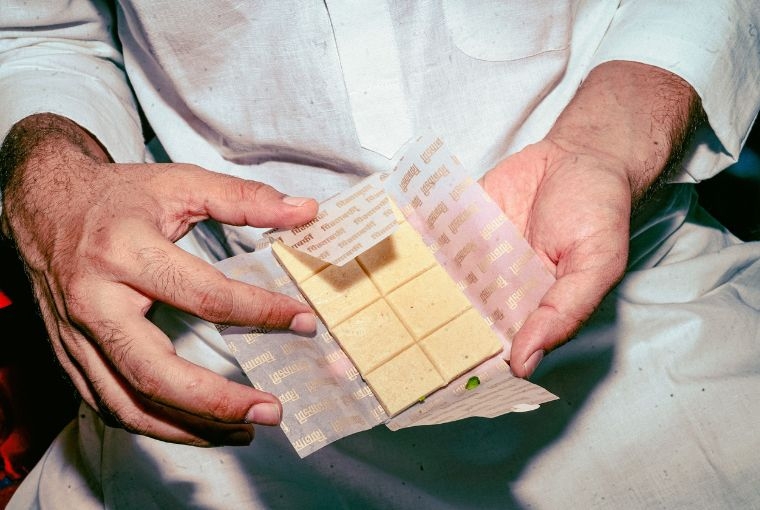

In 1968, Harshit and Tanay Agarwal's grandfather initiated a small mithai shop. He prepared a limited selection of mithai using the most basic ingredients. However, when the pandemic threatened the closure of the shop, Harshit and Tanay stepped in to revitalize its traditional appeal in a modern context. Today, Pistabarfi is reintroducing classic mithai flavors to the entire nation with its design-forward approach, all while maintaining a quintessentially Indian essence and celebrating Indian art forms. We talk to Harshit Aggarwal, the creative mind and co-founder of Pistabarfi on their design aesthetics, creative language and nostalgia.
Origins of Design Aesthetics
I was a mass media student, and I always envisioned myself as a film director. I am currently also working as a film producer. Over the past five to six years, I've been involved in producing advertisements and feature films. Pistabarfi has become a creative outlet for me, allowing me to express myself in a way I couldn't before. It serves as a channel for the creative voice I wanted to explore, which includes my aspirations to make films. So, in addition to preserving a family legacy, I've embraced it as a channel for my creative ambitions. In the past two years, it has organically led me towards the field of design.
A Personal Brand Voice
In the realm of mithai industry, I noticed a significant absence of a distinct brand voice. You see various brands with strong identities in sectors like sneakers or clothing, but the mithai industry seemed to lack that voice. Our decision to venture into mithai wasn't primarily driven by business prospects but rather an emotional one. Drawing from my background in advertising, I identified this gap in the mithai market where a unique and compelling voice was missing. With Pistabarfi, I look at it like a big feature film where I am there to tell our stories.
Design was another aspect that was notably absent besides the absence of a unique brand voice. Design has always been a source of great excitement for me. It's something I dabbled in and learned about. Now, when it comes to our products, we offer three main items: pista barfi, kajukatli, and gud laddu. The reason behind this limited selection is that I wanted to focus on perfecting these recipes. With my confidence in these offerings, I could then concentrate on the design aspect.
For Diwali, we did a shoot featuring a Ravan mask. The concept behind this photography and imagery is to venture into a slightly surreal zone. You start with a central idea, but you add a touch of eccentricity or something that makes it more intriguing. I believed that for mithai, having this kind of surreal imagery, which I had never seen before, would be a wonderful addition. And that holds true even now.
Packed with Art and Nostalgia
The gold artwork on my packaging features a deer, and it's actually created by Bhajju Shyam, an Indian artist from the Gond-Pardhaan community of Madhya Pradesh. He has even been honored with the Padma Shri. The connection to this artwork came about in an interesting way. I was assisting a filmmaker, Devashish Makhija, during 2015 and 2016, working on short films. During that time, he gifted me a book called Nightlife of Trees, which featured Gond art. That's when I first stumbled upon Gond art and learned more about it. The imagery in Gond art, with its depictions of trees and animals, and the small stories it conveys, is truly captivating. If you take a close look at my packaging, you'll see a deer with a tree growing from its horns. It's a stunning, contemporary, and distinctly Indian representation. There's something about it that really resonated with me.
I was born and raised in Bombay, and I may not have experienced the best of rural India. But for me, India is also defined by these captivating art forms that both excite me and are a part of my upbringing. That's why incorporating these elements struck a chord with me.
Also, we pack our boxes with muslin cloth to keep them warm and add a nice homely vibe to it. It may sound clichéd, but the inspiration for wrapping the mithai dabba in cloth came from my childhood experiences. As a kid, my only exposure to rural India was when we used to visit my grandmother's house in Dhanbad, Jharkhand. The journey took about three days by train back then, which was quite a long trip. On the way back, my Nani would give us laddoos in a steel box, covered with cloth. The cloth wrapping adds a warm and personal touch to the gifting experience. The whole concept was inspired by the laddoos my Nani used to give us on our way back from Jharkhand, which were a delightful treat when we opened the box.
For our packaging, I chose tints of greens and pink because you won’t really see such colours being used for mithai. It’s always golden, white or red, which I found a bit poppy and again devoid of a voice. With our colour scheme I think it makes it easy four us to tell our stories.
Words Paridhi Badgotri
Date 30.10.2023
